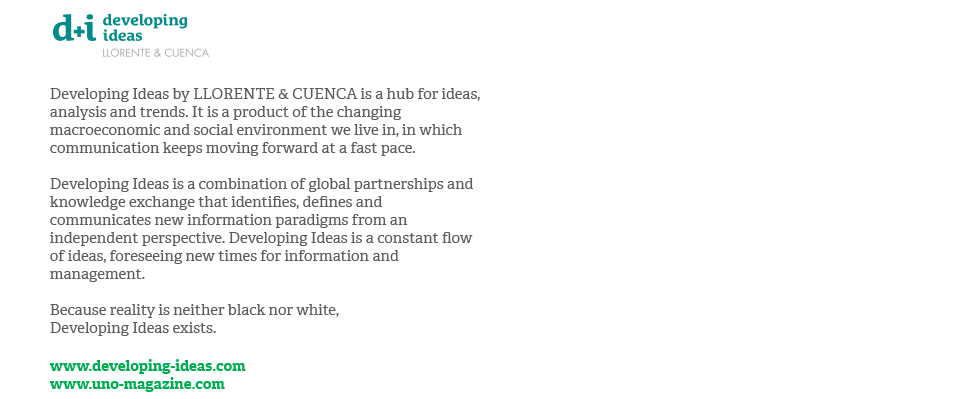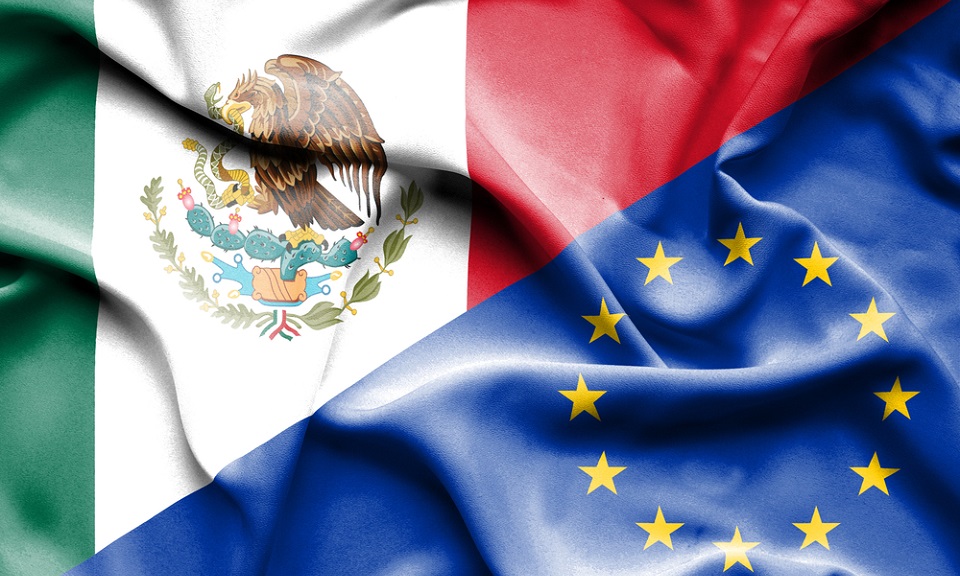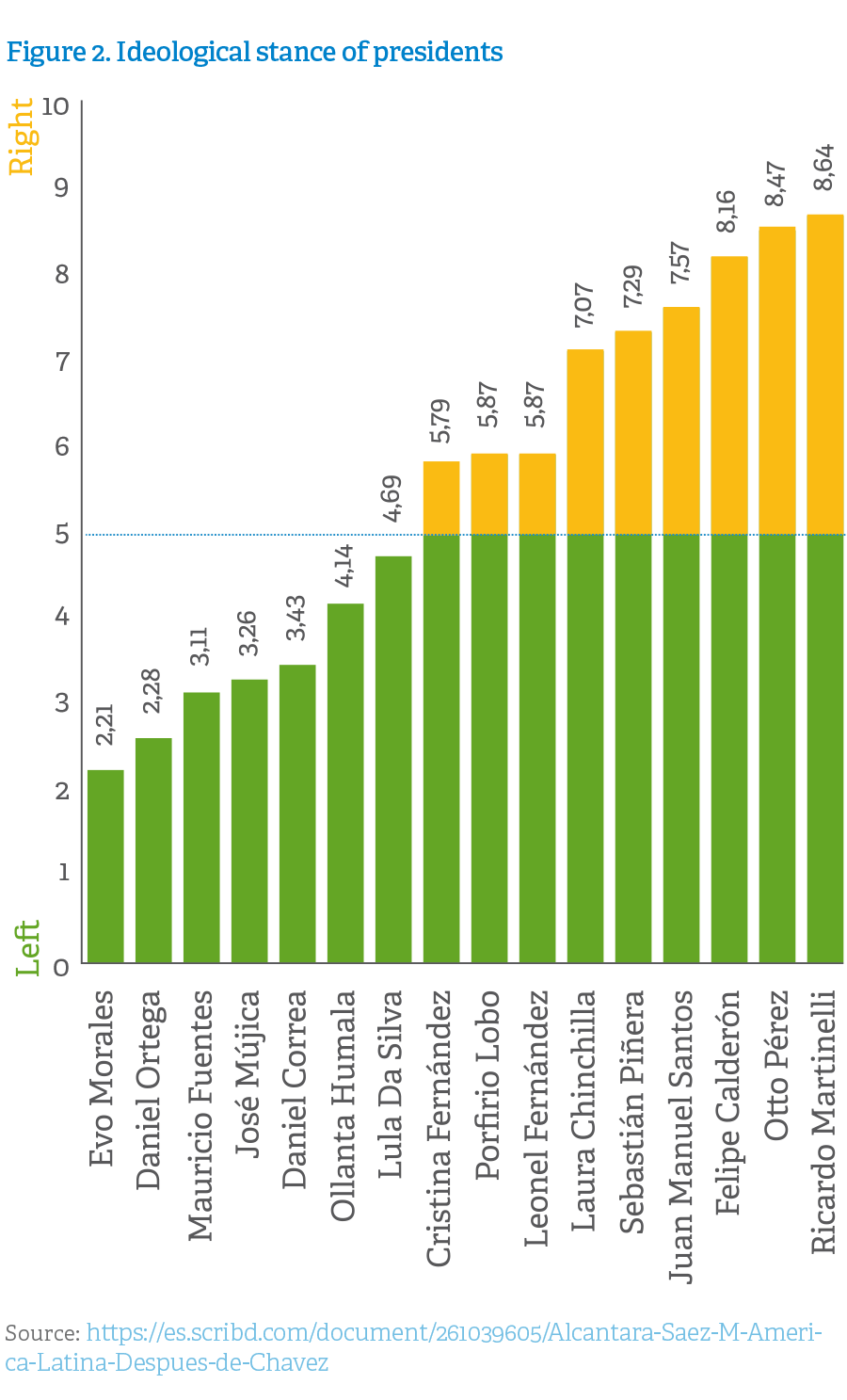Latin America prepares for an intense wave of elections in coming months, which will be decisive for the continent. While the region waits to see what will happen in Venezuela, countries like Chile, Honduras, Costa Rica, Paraguay, Colombia, Mexico and Brazil will hold their presidential elections by 2018. Against all odds, populism is still a factor in this political scenario, and instead of falling apart, it is more alive than ever. Beyond its wave of ideological momentum in Europe and the Americas, populism has started to produce similar leadership formulas wherever it sets up shop. New populist leaders have charisma, authoritarian leanings, political incorrectness and rhetoric around playing their part in the whole. They also share an aversion to nuance; a stark division into “good” and “evil;” a visceral rejection of the political classes, which they consider merely a powerful mafia; and the surprising ability to capitalize on all types of protest votes, using them to their own benefit.
Luisa García
Partner and COO for Latin America of LLORENTE & CUENCA.
Claudio Vallejo
Senior Director of the Latam Desk at LLORENTE & CUENCA Spain.
INTRODUCTION
The outcomes of various electoral votes since 2015 have caused the perception to spread that populism and populist demagogic movements at both ends of the spectrum–at their peak in Europe and the United States with leaders such as Donald Trump, Marine Le Pen, Podemos and Syriza–are actually beating a retreat in Latin America. Latin American elections in the last two years, beyond the specificities typical of each nation, would seem to reveal and confirm this ebb.
As a result of Mauricio Macri’s 2015 victory over “Kirchnerism,” the idea of a populist withdrawal has already been aired by Italian academic Loris Zanatta, who wrote the following in the La Nación newspaper: “Now that the favorable economic cycle is behind us, the open economies of the Pacific Alliance are generally proving to be more robust and dynamic than the nationalist and autocratic economies in the countries bordering the Atlantic. Thus, to understand the new climate that–according to certain signs–would seem to be blossoming in Latin America, it is better to measure by their nature the political regimes. By doing so, we can see the broad
support populist regimes have enjoyed until now deflating the demand for normal democracies, with no adjectives, growing.”
Nonetheless, as we will try to demonstrate in this article, the looming end of populism in Latin America is actually a mirage, a false perception. Here, we will look at populism as a way of interpreting the political game, one in which populists claim the total representation of a “people,” formed only by the populist leader’s supporters, while the opposition lacks legitimacy and is accused of being unpatriotic. This approach, far from being on the decline in Latin America, continues to flourish, and is now brandished not only by parties, movements and leaderships linked to 21st century socialism, but also by groups on the right of the political spectrum,
providing greater opportunities to win elections and obtain electoral impact.
Effectively, the strands Latin American populism is made of are enduring, persisting into the current regional situation. Indeed, there are clear signs of new populist forms and leaderships emerging from the fatigue certain governments are suffering, as well as the deceleration and growing disenchantment toward inefficient and ineffective states not suitably addressing the growing middle class’s needs, leaving them feeling let down. This new face of populism, whose immense majority resides on the fringe of “21st
century socialism,” continue to be filled with authoritarianism, committed to protectionism, run by charismatic leaderships and characterized by institutionalization. As political expert Andres Malamud stresses:
“Populism promotes a direct relationship between the leader and the masses. To evade parliaments and political parties, populist leaders build dissonance and take their stand firmly on one side: that of the people. The generic name for populism is Manicheism. More than institutions or the elite, the enemy of populism is nuance.”
In short, though we have seen the defeat of Kirchnerism in Argentina and Chavism in Venezuela’s legislature, as well as the difficulties Correa had holding onto power in Ecuador, these do not represent any kind of end to Latin American populism. It is actually the complete opposite–as head researcher at the Royal Elcano Institute Carlos Malamud said, “There will be new types of populism in this new wave, although of a different character than what revailed since 1998 and continued with great strength until Hugo Chavez’s death in March 2013.” This article will analyze the changing political cycle the region is experiencing and how, along with the alternatives of the rising center-right and declining center-left, other types of positions begin to emerge from right-wing populism, developing parallel to the persisting shipwrecked remains of 21st century socialism–left-wing populism.
THE STAGES OF POPULISM IN LATIN AMERICA
Populism in Latin America has historically proven highly resilient, skilled at mutating over the course of the 20th and 21st centuries. Susanne Gratius described how the original “classic” populism emerged in the 1930s’ and 40s’ with Juan Domingo Peron and Getulio Vargas. It saw a revival after many analysts, experts and academics considered it dead in the form of neoliberal populism in the 90s’, marked by Carlos Menem, Alberto Fujimori and Abdala Bucaram. This led to a new facet of populism in the last decade, known as 21st century socialism, whose main face was Hugo Chavez. Thus, populism continued to show its ability to resist its demise, maturing in the fertile soil of political and institutional crises, as well as the economic and social crises that wound up becoming excellent breeding grounds, ideal for the germination, growth, development and even mutation of populist ideas.
Some of the new world’s populist paradigms, such as those of Donald Trump, the ultra-right Marine Le Pen and left-wing Podemos, cannot be explained without the context of the political and socioeconomic crises these countries have recently experienced. Likewise, the crises of the 30s’ and ensuing changes in the social model (urbanization) and economic model (industrialization) are behind phenomena such as Peronism in Argentina and Vargism in Brazil. The current crisis, which kicked off in 2008, explains the emergence of phenomena like Trump in the United States, Le Pen in France and Podemos in Spain, as well as Golden Dawn and Alexis Tsipras–at least until he took office as prime minister–in Greece.
” Populism has continued to show its ability to resist disappearance, maturing on suitable terrain”
The populist discourse is simple, direct and easy to understand, constructed by leaders with excellent oratory skills. It tends to be effective because it says aloud what many think to themselves. It does not appeal to reflection or analysis, but to instinct; it channels and fosters accumulated social rage and rancor. And Latin America is a hotbed that favors these forces; Citizens’ are disenchanted and dissatisfied with an ineffective state and a corrupt party system that does not suitably meet their needs. There is a large population that has socially progressed but, with the current low economic growth, fears losing the terrain it has gained and not fully integrating into the emerging middle class. Populism may appear extinguished, as happened in the region in the 60s’ and 70s, or receding, as it is now, but it contains a message that ends up seeping back through cracks left by cyclical crises and traumatic socioeconomic changes. After the crisis of the 80s’ (the “Lost Decade”), Menem’s and Fujimori’s
“neo-populism” arose; after the “Lost Half-Decade” (1997-2002), Chavism and the “21st century socialists” appeared.
Now, as Emili J. Blasco points out:
“There is a change in the economic situation, which is being reflected by political changes. This does not mean it will spread to all countries. Some governments will go through bad times and others
will be definitively done away with, although I don’t think we will see the end of populism at this time.”
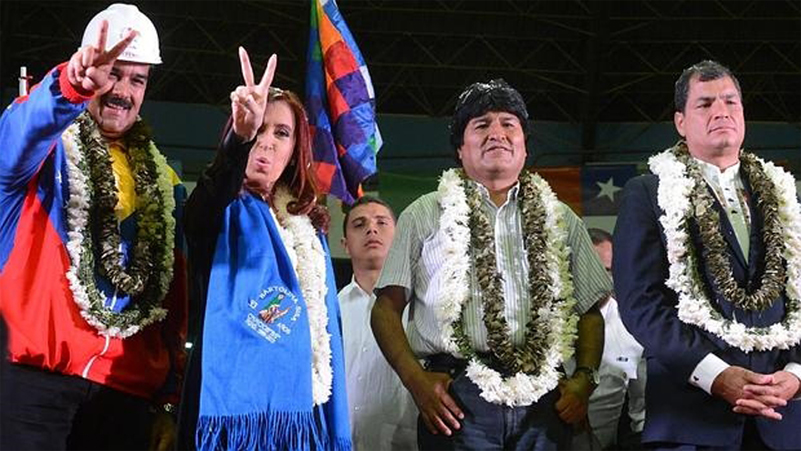
THE APPARENT POPULIST DOWNTURN IN LATIN AMERICA
The defeat of Kirchnerism during Argentina’s 2015 presidential elections, of Chavism in Venezuela’s legislative elections this year and of Evo Morales in Bolivia’s referendum have all served to create a false sensation that populism was and is on the decline in a region where the majority of election results show defeats for governments close or linked to “21st century socialism.” The growing difficulties for Nicolas Maduro’s government in Venezuela since 2016, or Lenín Moreno’s tight 2017 victory in Ecuador have only strengthened this feeling, ignoring Daniel Ortega’s overwhelming reelection in Nicaragua.
What is happening in the Latin American political panorama is the fall of a particular method of governing. In 2015, Mauricio Macri’s victory over Peronist Daniel Scioli began a new era in the region, marked by the influx of center-right governments–a trend only strengthened by Jimmy Morales’ victory against “social democrat” Sandra Torres in Guatemala and the triumph of the Democratic Unity Roundtable over the United Socialist Party of Venezuela (PSUV) in the Venezuelan legislative elections.
As political scientist Steven Levitsky says: “(This) withdrawal… has two main causes, (where) the first is… the natural fatigue engendered by three or four presidential terms of governance (…). After three terms, governments lose their political reflexes; they become distanced from the people, and corruption grows. Even when they are not that corrupt, as is the case with Chile’s Concertación, the people get tired. Sooner or later, this weariness affects all governments. Twelve (Argentina) or 13 (Brazil) years in power is a lot. Nothing is permanent in democracy. Nobody governs forever.”
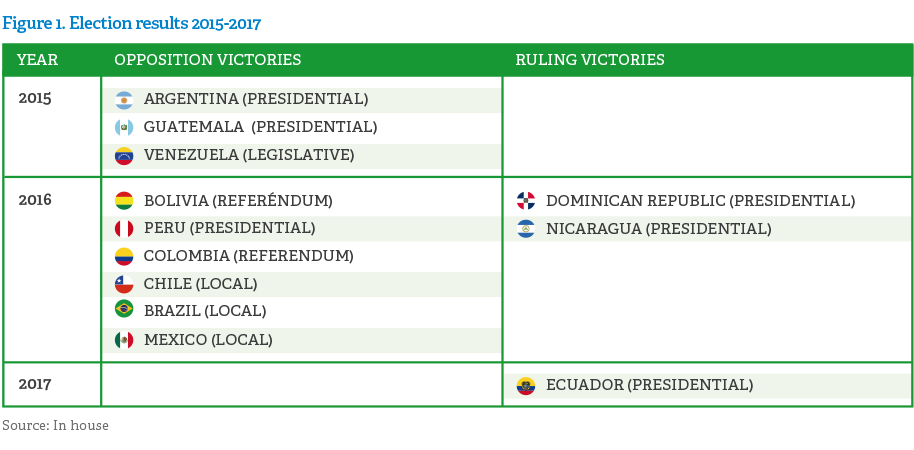
Populism, in the version connected to 21st century socialism, is experiencing a clear contraction, much more pronounced since 2013, following its progression since in 2005. Hugo Chavez was very much alone in Latin America for six years (1999-2005), aside from his alliance with Fidel Castro’s Cuba. But in the middle of the last decade, Chavism started to win allies in the region: Evo Morales in Bolivia in 2005, Daniel Ortega in Nicaragua in 2006 and Rafael Correa in Ecuador in 2007. Since 2009, Chavez’s anti-imperialist and antineoliberal proposal, expressed in ALBA, Petrocaribe and more, continued to expand, with new allies like Manuel Zelaya in Honduras and Fernando Lugo in Paraguay. Furthermore, he had the sympathy of Lula da Silva in Brazil and a similarity to Kirchnerism in Argentina.
The latest defeats or clear withdrawals indicate the burgeoning decline of this type of government in favor of an about-face. Now, there is a predominance of center-right political parties, movements and leaders, as well as the emergence of another class of demagogic and populist leadership, now distant from the 21st century socialists that preceded them. These new populists have–as described by Flavia Freidenberg in her modern classic study titled La tentación populista (The Populist Temptation)–a series of precise characteristics:
“Populism (is) a leadership style characterized by direct, personalist and paternalist leader follower relationships, in which the leader does not recognize organizational or institutional mediation, speaks on behalf of the people and discursively relegates their opposition to ‘the others’; followers are convinced of the leader’s extraordinary qualities and believe that, because of them and/or the material and symbolic value they have, the leader will improve their own personal status, or that of their surroundings.”
The populism linked to 21st century socialism may have stopped spreading or be in decline, though populism in general–the emerging populism that follows more right-wing stances–has optimal opportunities for development, as the political and socioeconomic conditions that spurred the last decade’s populist surge continue to persist in the current situation, in one form or another. University of Salamanca Professor Manuel Alcantara recalls how the success of Chavism and similar movements was due to a number of contributing factors. Like the period from the end of the 90s’ to the first decade of the 21st century, at present, Latin America continues to experience some of the particular shortcomings that fed–and continue to feed–a revival of different types of populism:
POPULIST SYSTEMIZATION
according to Manuel Alcantara

POLITICAL DISAFFECTION
In the professor’s words, the onset of the new millennium saw “a severe crisis in political representation, which translates not only into a loss of society’s trust in political parties, and thus a rejection of them, but also of traditional professional politicians.”
Similarly, today we are witnessing a distancing between representatives and the represented; There is an extreme mistrust of the “political class,” disenchantment with parties and traditional participation routes and a marked lack of trust in governments. As UNAM Faculty of Political and Social Sciences Professor Jose Woldenberg states regarding Mexico:
“Like never before, I am seeing people with very little hope. You get the impression that, for many, civic duty ends after voting… Clearly, we have a deficit of citizen responsibility as a country. Very few Mexican citizens regularly participate in any organization, whether human rights, electoral observation or environmental defense, making up a minority.”
Indeed, only around 40 percent of the Latin American population expresses satisfaction with the democratic quality of their respective countries, according to a study by Chilean consultancy Latinobarómetro. This is what French Political Scientist Pierre Rosanvallon describes as democratic malaise, characterized by the growing loss of the importance of elections, decreasing centrality of administrative power (and its public policies) and the lack of connection people feel with public servants and institutions.

DOUBTS ABOUT THE MODEL
Although the region is not going through a severe economic crisis, like during the Lost Half-Decade (1998-2003), the current economic deceleration and slowdown has called into question the “oil company-export model, in which the political class had the right to profit from rentier distribution channels.”
The Lost Half-Decade resulted in third-wave populism (“the new populism”), and the current stagnation the region is suffering has caused dissatisfaction with an inefficient state and a stagnant economy that offers few opportunities for social improvement, creating a fertile breeding ground for a new populist wave–this one
situated on the right side of the political spectrum.

GROWING SOCIAL DIVIDE
Alcantara states that, after the Lost Half-Decade, “a severe conflict regarding the relationship between the economy and society became clear, as well as regarding the state’s role in handling them both.”
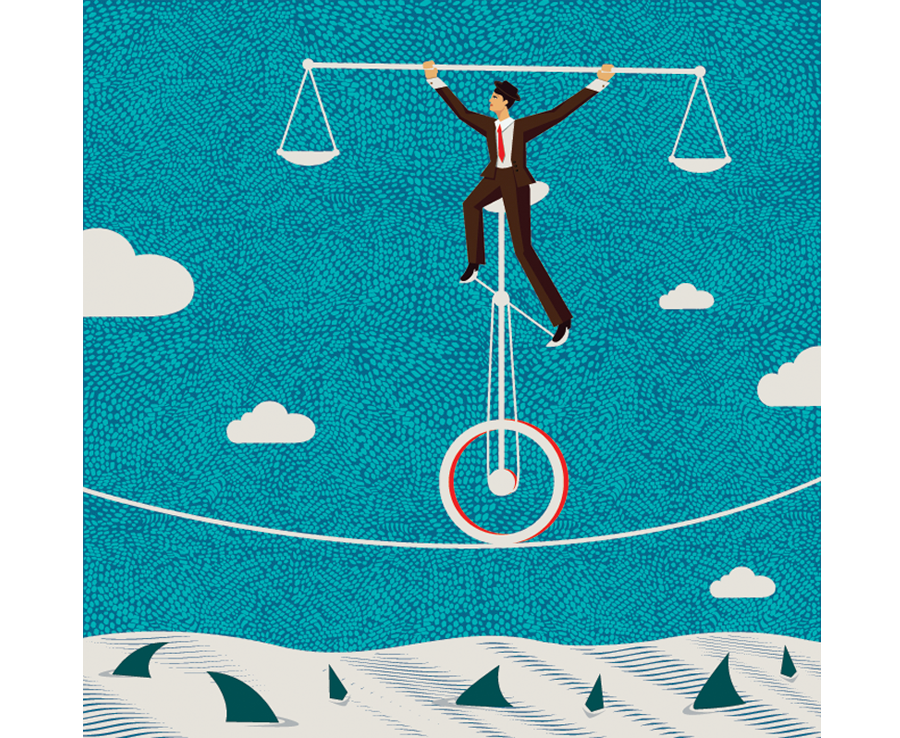
In the present situation, social mobilizations led by the emerging middle class (as can be seen in Chile, Brazil and Guatemala) are applying pressure to obtain more effective and efficient states that channel their demands toward better public services–such as transportation, security, education and health–and greater transparency.

DISAPPOINTING REFORMS
Two decades ago, according to Alcantara, “the failure to shrink the enormous inequality was recorded and had even deepened, partly due to disappointing application of structural reforms backed by international financial institutions.”
At present, the slowdown has endangered the social status and ground gained, not only regarding the reduction of poverty and inequality, but also the consolidation of the middle classes. The most vulnerable sectors of these middle classes run the risk of social setbacks due to lean economic growth.
This overall context is what explains the current and future survival of populism, even though it is turning up under other guises and with
different characteristics. Indeed, emerging center-right alternatives (Mauricio Macri in Argentina) now coexist with center-left parties and coalitions (Michelle Bachelet’s New Majority government in Chile) and two types of populist-leaning movements, as Alcantara summarizes in this chart:
SURVIVAL OF NEW POPULIST MOVEMENTS AND GOVERNMENTS
Among the governments that rose during the explosion of Chavism in the last decade, each with their own characteristics and features (Evo Morales in Bolivia, Daniel Ortega in Nicaragua and Correa in Ecuador), there are surviving forces that clearly espouse the most recent populist tradition. This is the case with Mexico’s Andres Manuel Lopez Obrador (AMLO) and with Kirchnerism in Argentina, represented by former president Cristina Kirchner, who ran for Senate this year to pave the way for her return to the Argentine presidential residence, the Casa Rosada, in 2019. They are the remains of what Susanne Gratius described as the third populist wave, or “new populism,” which has ruled the political landscape over the last decade.
AMLO, a favorite for winning the Mexican presidential elections in 2018, relies on demagogic discourse that encompasses all the features common to this type of populism.
For example, the dichotomous and Manichean presentation of a reality fundamentally divided between “good and bad,” exemplified by his accusation that the traditional political class is corrupt:
“All of them have turned their backs on our movement, and I foresee new betrayals, because betrayal always comes in groups, never arriving alone. Those who betray are the zealots, the corrupt–not the people.”
AMLO’s discourse has been constructed with the goal of creating a common and easily-identifiable enemy: the “power mafia,” made up of the traditional parties and political class. He presents them as a “mafia” that has betrayed the people, a mythologized abstract and symbol of Republican purity, for whom the leader–in this case AMLO–represents and embodies. After the election in Edomez this June, AMLO has seen his position for next year’s elections strengthened.
AMLO AND HIS THREE PILLARS
His proposal is held up by the three pillars:

a. His great charisma. All populism requires charismatic leadership, with a direct and non-institutionalized relationship between the leader and their followers. Claiming that he speaks on behalf of and as the embodiment of the people, one of AMLO’s great strengths is how attractive his discourse is to the working classes. It is based on pointing out faults in traditional political class, denouncing corruption and brandishing a message with an extreme nationalist flavor around defending itself–very important in this situation, with Donald Trump right across the border, upholding policy that does not favor Mexico’s interests).

b. Citizens disenfranchisement with traditional parties. Populism grows to the extent that democratic institutions are weak, and a crisis setting supports the emergence of demagogic governments. In this regard, public exhaustion with all other political forces has elevated opinions about AMLO. The PAN governed for two six-year terms (2000-2012) and the PRI since 2012, but neither of the two administrations has managed to channel the population’s desire for change or to carry Mexico toward sustained high-level growth. The prevailing belief seems to be that “it’s his turn,” or “now it’s AMLO’s time,” reflecting public opinion that the time has come to give a party (Morena) that, along with the PRD, has not governed Mexico since the PRI government ended a chance to lead the country.

c. The mirage of expectations. A possible AMLO government would start with a serious problem, arising from his populist pontification. His promises for change and regeneration create revolutionary expectations that would be very complex to realize. AMLO has created a party centered on himself (in reality, a political power that has nothing without him) that has an underdeveloped structure, with few and heterogeneous policies. This means an AMLO government would immediately run into the current complex
reality: He would not have a majority in the Chambers; he would have little backing among governors, as the majority are in the PRI and PAN parties; and he would face difficulties shaping a solid and coherent governing team.
AMLO would try to offset these weaknesses by relying on his ability to popularize a utopia based on a mythical reconstruction of Mexican history. He aspires to recreate a mythologized Republican past based on the Benito Juarez era, one in which moral and ethical values were placed above material interests and in which corruption–theoretically–did not exist. This utopian and mythical world, which many of his followers dream of recreating, would involve managing complex situations from the very start of his term, requiring significant compromises to deal with the tough Mexican, regional and global reality.
These difficulties may lead AMLO to take short-term measures aimed solely at maintaining his levels of social support. It would be a government with continuous and dramatic hurdles to jump and he would try to compensate for the situational difficulties it would continuously run into: paralyzing the reforms from Peña Nieto’s term, committing to raising nationalist social and political spending with regard to the United States, trying to prove itself firm and overreacting to Donald Trump’s initiatives.
It is unlikely AMLO will unleash a wave of expropriations or adopt a policy based on 21st century socialism if he takes office. It is much more probable his government team would be marked by improvisation and ups and downs, a result of the heterogeneity and collective inexperience of the people at his side. This would be especially true if his government, which would already remove foreign investments, is heightened by his first anti-reformist measures and espouses an official line almost certainly marked by a lack of a single and coherent narrative.
APPEARANCE, EMERGENCE AND THE RISE OF ANTI-ELITE POPULISM IN LATIN AMERICA
Alejandro Ordonez: “I will brandish politically incorrect discourse, challenging the established powers.”
Populism linked to 21st century socialism prevailed in the region since 1998, followed by the left-wing rentier populism we have seen since 2015–but this is now facing the appearance of a new wave of populism situated on the right side of the political spectrum. This has been strengthened by the international emergence of success stories to emulate, at least in part, such as the one embodied by Donald Trump in the United States. This populism is characterized by one concrete feature: a rejection of the ruling political class (the majority of which are linked to 21st century socialism) and traditional parties, which they feel are far from their roots. This element was present in the three previous types of populism, but it is extremely pronounced in this fourth wave.
There have already been cases in the region that contained similar characteristics to those the new U.S. president later popularized: leaders coming from outside traditional parties, who were not involved in politics, were related–in one way or another—to mass media and grew alongside crises or out of the collapse of old party systems weighed down by corruption.
“I will brandish a politically incorrect discourse, challenging the established powers“
There have already been cases in the region that contained similar characteristics to those the new U.S. president later popularized: leaders coming from outside traditional parties, who were not involved in politics, were related–in one way or another—to mass media and grew alongside crises or out of the collapse of old party systems weighed down by corruption.
Foreshadowing what was yet to come, the phenomenon of Jimmy Morales in Guatemala in 2015 was remarkable. Now, in the present scenario, there are other figures who could become populist leaders, emerging from an antiestablishment right wing. These include people like Jair Bolsonaro in Brazil, Alejandro Ordonez and, in some ways, Uribe in Colombia and Fujimori in Peru.
These leaderships grow because there is a breeding ground: low economic growth and social and political malaise regarding inefficient administrations. This environment favors protest votes against whoever is in power: in the majority of cases, this is center-left or 21st century socialist governments, which explains the about-face toward right-wing options and options from outside the system. These leaders are born from the ennui of a large portion of the population, who felt like they were not considered in the decisions affecting them. As Peter Hessler wrote in his recent New Yorker article “How Trump is Transforming Rural America:
“The calculus seemed to have shifted: Trump’s negative qualities, which once had been described as a means to an end, now had value on their own. The point wasn’t necessarily to get things done; it was to retaliate against the media and other enemies. This had always seemed fundamental to Trump’s appeal, but people had been less likely to express it so starkly before he entered office.”
The protest vote is currently being channeled in two different ways in the region: Via candidates from the traditional opposition parties
and support for outsider candidates. Opposition victories in Latin
America have been happening regularly in recent years, especially since 2015, primarily (but not exclusively) affecting leaders and presidents considered left-wing (Kirchner in Argentina, for example). These defeats of the different lefts (Brazil’s PT and Chile’s New Majority in the 2016 local elections; Chavez in the 2015 Venezuelan legislative elections) are accompanied by the rise of center-right personalities, such as Mauricio Macri in Argentina and Pedro Pablo Kuczynski in Peru.
“The Trump phenomenon would ripple and expand throughout the world, also in Latin America”
An example of the second method–support for outsiders–was Jimmy Morales, who, facing the collapse of the Guatemalan party system and political class in 2015 due to the La Linea scandal, emerged from outside the system to take his victory in the second round of presidential elections. Morales became the dark horse in Guatemala’s 2015 elections for three primary reasons, explaining the success of this television actor turned politician:
1. Morales successfully positioned himself as the only candidate who could convey an image of renewal from old politics, which were linked to clientelism and corruption. He was, in some ways, the advance of Trump and the new wave of populist politicians in Latin America. Daniel Hearing, professor at Francisco Marroquin University, stated that a comedian with no money or political experience who tested the waters for the next election turned out to be in the middle of all of this. With the favor he was given for not being a politician, he only had to smile to become the most credible
of all candidates. He was not corrupt or a thief–but not much more than that.
2. He managed to channel citizen malaise regarding the political parties and class, with a message that particularly resonated with the urban electorate, especially in the capital and among the middle classes, which mobilized against corruption. Indeed, the discredit the Guatemalan political class suffered (and still suffers) due to numerous corruption cases and disenchantment with institutions is what eased the emergence of this new figure in the country’s political panorama. Citizens’ malaise, which caused a multitude of protests from April to September 2015–as well as the fall of Otto Perez Molina–ended up channeled by Jimmy Morales. With no political experience, his persona was enhanced by the image he projected: a man distant from the elite, with no shadow of corruption. The faults he was accused of, including lack of political experience and knowledge about the state, he wisely knew to transform into virtues in his favor–he was not involved with the reviled traditional politics.
3. He placed corruption as a priority topic on the national agenda, an area where he was the clear winner when compared with Manuel Baldizon, who had a long history in politics; or Sandra Torres, who held important positions in previous administrations and was linked to political clientelism.
The example of Morales, viewed from this perspective, becomes foreshadowing for what was to come. Popular players and political outsiders grew their electoral base by brandishing antiestablishment messages that impressed citizens tired of the traditional party system and its corruption. These types of leaders–Morales in Guatemala; the governor of Nuevo Leon in Mexico, Jaime Rodriguez Calderon, aka “El Bronco;” Trump in the United States—raised great expectations for change and renewal but, over time, run aground when the current turns against them.
The Trump phenomenon, an example of successful personal and non-institutional leadership, with a message that mobilized an electorate that felt alienated from traditional parties, has rippled and expanded across the world, including Latin America. He has become a paradigm to imitate for people who, distanced from large parties and popular due to their media presence, try to take office via direct, politically-incorrect discourses that are intentionally sensationalist and polarizing. Furthermore, the message is extremely personalist. Though it comes from the right wing, it maintains certain parallels to the methods–and partly substance–of the left-wing populisms of the past. This “Trumpist” or “anti-elite” populism is currently on the rise in Latin America. It will progress strongly in some countries, others will continuously distance themselves from it and in yet more it may remain as a seed, to sprout in the future. Failing party systems burdened by corruption (Brazil), highlypolarized societies over certain topics (Colombia) and countries with brewing disaffection with an inefficient state and
a political class that does not meet the population’s needs (Peru) are all breeding grounds for the germination, maturation and success of this new type of populism.
There is no shortage of examples of these types of leaders: in October 2015, the BBC’s Brazil office warned that the 2018 presidential race “could have a Brazilian Trump,” speaking with respect to Federal Deputy of Rio de Janeiro Jair Bolsonaro, with surveys putting him among those with the highest number of intended votes, along with Marina Silva and Lula da Silva. “In 2018, Brazil will continue in the same vein,” said Bolsonaro after learning of Trump’s win. One of the keys to his rise–according to Datafolha
CEO Mauro Paulino–is that over the years, Bolsonaro has managed to implant his messages and create a personal brand that incorporates extreme-right values: violent punishments for crime,homophobia, anti-feminism and the like.
However, there are more contenders for the title of “Latin American Trump.”Alejandro Ordonez, former district attorney in Colombia, strives to lead–or at least integrate–a large right-wing coalition, starting with an antipeace agreement, to prevent Santos from winning again or a leftist turn in the country.
His ideas, methods and mannerisms are in some reminiscent of Trump, who he did not hesitate to defend: “It is a proposal for conservative thought. It is a conservative revolution, similar to the ones led by Reagan and Thatcher. And now we can say Trump is doing it, despite himself. As I have said, old orthodoxies and paradigms are breaking in Western democracies, and not a moment too soon. In the United Kingdom with Brexit; in France with Macron and Le Pen, who both came from outside the establishment; and in Colombia with the Oct. 2 plebiscite. Trump is a benchmark for political affairs, because he is one of the few politicians who does what he promises. He confronts the establishment. There are things we may not agree with in his personal life or eccentricities, but I aspire to say what I think, do what I say and fulfill what I promise. I have had the thoughts I do since I was a little boy, and I have never been ashamed of it or apologized for who I am. I will brandish a politically incorrect discourse, challenging the establishment. That will be my campaign.”
CONCLUSIONS
Latin America is experiencing a new political cycle fed by economic prosperity and marked by three dynamic elements moving in parallel:
a. Weakening options linked to the various left-wing parties in the region.
b. Increased strength of center right options.
c. Survival of two types of populism, negating the hypothesis that this style is declining. One form of populism is close to the 21st century socialist approach, and the other is situated on the right, with a clear anti-elite message.
These new populist movements may or may not win elections, but they are a palpable presence in the political arena–and they are growing due to the worsening economic climate, which has threatened the social improvements achieved since 2003. It is also nourished by public disaffection with and criticisms of corrupt political parties and politicians, then further strengthened by states
and administrations that are ineffective and inefficient in designing public policies. Populism channels this desire for public services–such as education, health and transportation and security–to work and run better.
The inefficiency, weakness and precariousness of institutionalization processes has opened the door to rising populist sentiment, advocating for a strong, personalized concentration of power to stand against institutional weakness. The malaise around a dysfunctional state translates into backing alternatives with a heavy personalist outlook. These right-wing populisms base their success on brandishing flags left-wing parties have waved for over a decade: they build a dichotomy between “good and bad,” people and oligarchy. Enrique Gil Calvo speaks of how populism aims to grow: “Collective identity appeals to common aversions, as Laclau theorized. This creates a populist identity characterized by its negativity, as it needs to manufacture an enemy of the people–this is the base on which its political success depends… Populist reasoning tends to exacerbate antagonistic conflicts.” In short, demagogy and
populism are far from falling into decline or disappearing from Latin America. Indeed, everything points to its reappearance with a different mask, as well as developing a global presence. This is thanks to the current fertile conditions of economic stagnation, success stories to imitate (Donald Trump) and charismatic leaders who aspire to take advantage of this new populist momentum. In reality, there is nothing new under the sun, and as Moises Naim would point out: “The most interesting thing about Trump, as a political product, is not how exceptional he is, but how common he is in these anti-political times. Terrible simplifications proliferate as society’s uncertainty and anxiety grow, which is why they are a global trend today. They are everywhere. But Trump is the most dangerous manifestation of this trend. And that in itself is indeed exceptional.”
This report has been produced by the analysis team of LLORENTE & CUENCA.
